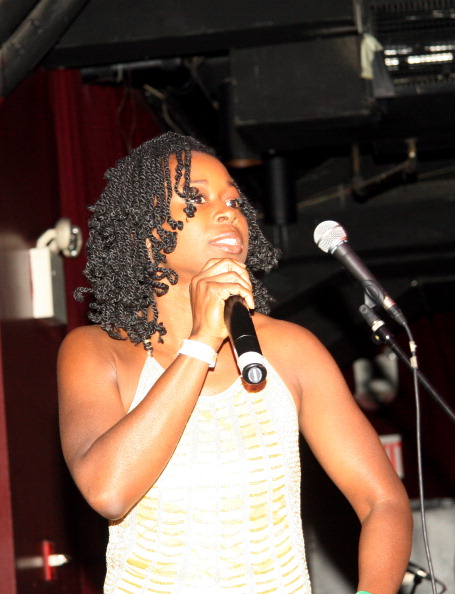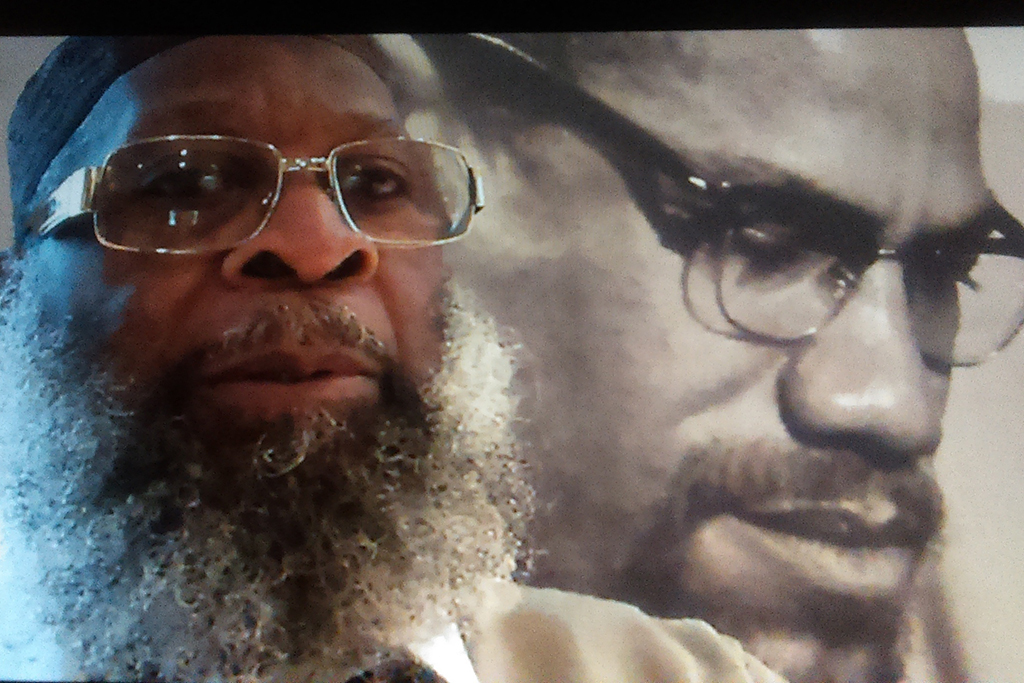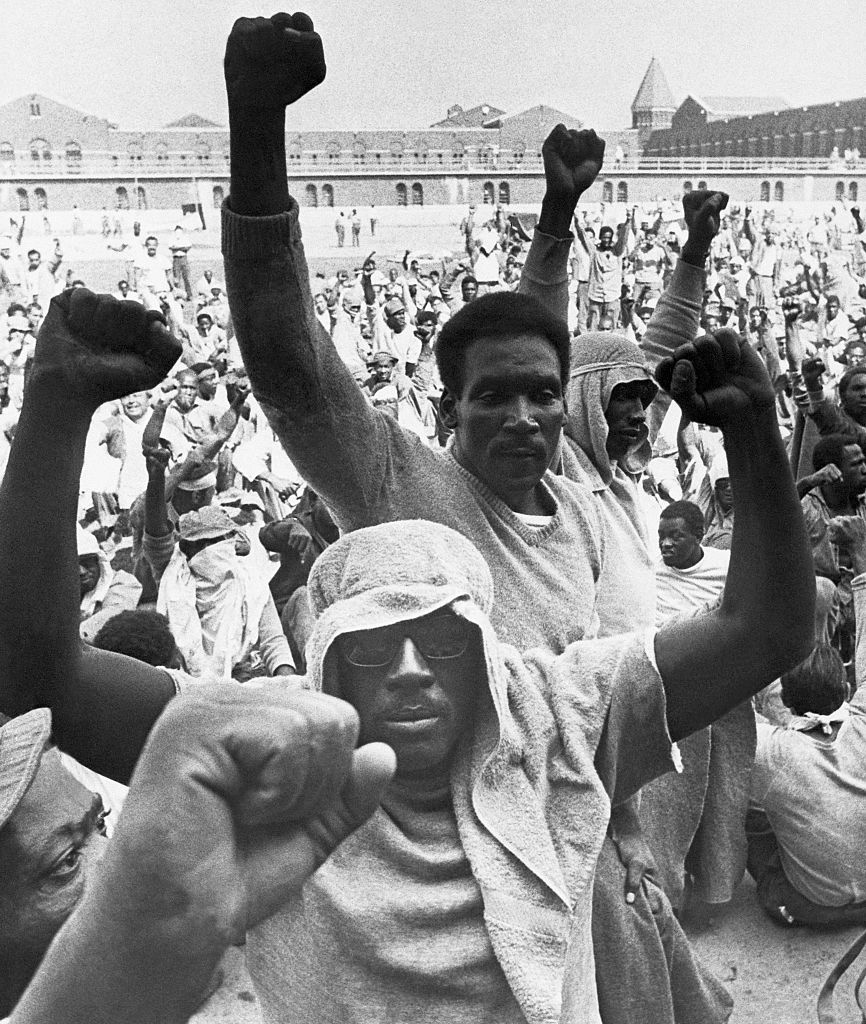Black August, The Month Set Aside To Commemorate Black Freedom Fighters, Turns 45. Renowned Organizer, Monifa Bandele, Explains Its Critical Importance

Source: Bettmann / Getty Angela Davis’ first press conference after being released on bail. She faced the death penalty for charges related to the attempt to free George Jackson but was acquitted.
August—-Black August—like February’s Black History Month and June’s Juneteenth, is a month dedicated to honoring Black history and history makers. But its look goes beyond those who–mostly rightly–are broadly anointed as such by much of American society. Born on the unforgiving grounds of California’s San Quentin Prison, Black August is a child of the regularly erased, the often unnamed and widely unclaimed people most of us were never meant to know, let alone respect or love: the incarcerated and deeply politicalized leaders of the Black Power Movement.
Today marks the first day of the 45th annual commemoration of Black August, which originally honored two men, brothers, who were killed by law enforcement: George and Jonathan Jackson. Over the last five decades, it has evolved into a powerful tradition that elevates the range of Black freedom fighters– and today it is honored by activists across the nation and world.
The month-long observance is marked by fasting, reflection, education, celebrations of Black culture and above all, those whose lives, victories or deaths are tied to August–and to fighting white supremacist oppression.
Target: Anybody Black
Former Black Panther and political prisoner, Jalil Muntaqim, a California native and one of the youngest people to join the Party, was locked up in New York State prisons just shy of 50 years–and 25 past his parole date. He shared with NewsOne that Black August was created by the Black Guerilla Family (BGF) in 1979.
“Thirteen years before Black August, in 1966, W.L. Nolen, who had been George Jackson’s political mentor, teamed up with his student and started the BGF. They were at San Quentin. Its goal was to protect Black prisoners who were being regularly attacked and killed by the Aryan Brotherhood (AB) Jalil explained, referring to the notorious white supremacist prison gang.
“And it wasn’t just the AB. It was them working with the California Mexican Mafia (commonly called La Eme, and is separate and distinct from the Texas Mexican Mafia.). La Eme’s godfather was a white man, a Slav, named Joe “PegLeg” Morgan who was able to broker an alliance between his group and the AB. They had a common enemy: Black prisoners generally but most specifically, the BGF.

San Quentin’s Death Row Source: Justin Sullivan / Getty
The Murders That Murders Produced
In 1969, three years after the creation of Black August at San Quentin, George Jackson and W.L. Nolen were transferred to Soledad Prison where Nolen wasted no time in filing a complaint against the abuse of prison authorities. He wrote that,
“Prison guards are complicit in fomenting racial strife by aiding white inmate confederates in ways not actionable in court, i.e., leaving cell doors open to endanger the lives of New Afrikans [Black people born in America and whose ancestors were enslaved]; placing fecal matter or broken glass in the food served to [us]…as these material factors would be difficult to prove.”
Four months later, in early January of 1970, according to historian Dan Berger in his 2014 book Captive Nation: Black Prison Organizing in the Civil Rights Era (University of North Carolina Press.) Nolen told his parents that the guards were trying to kill him.
Days after that call, on January 13, 1970, Soledad prison guards “engineered a confrontation [between] Nazi prisoners…” and Black prisoners. And Nolen was in their line of sight.
The white inmates sent into the prison’s O-yard that day were known to be violent toward Black prisoners. And true to form, they began circling up on Nolen. Getting him would likely strike fear in other Black prisoners and make the BGF back down. If that happened, it would be a win for them and the white supremacists who ran San Quentin.
Between glances by some of the AB at the guard perched in the gun tower with his gun trained, and then back down at Nolen–and after a few punches were thrown, the guard in the tower, Opie Miller, known to be an expert marksman, shot Nolen, and then three other Black prisoners. It was a setup.The two groups were never locked in the same yard and none of the had weapons on them; prisoners were strip-searched before being allowed to go into the yard. For the AB, that mattered little if the man in the tower was ready to act like their hired gun. Which he was. Opie Miller, the guard in the tower who known to be an expert marksman, took no time in shooting Nolen, and then three other Black prisoners.
Only one survived, but all might have if Miller had allowed them to be taken to medical. Instead, as the men tried desperately to help their dying friends, they were threatened by Miller with also being shot. They were to leave the bodies lying there bleeding.
It was that stretch of time in which they went unattended to that likely became the direct cause of their deaths.
Because all had survived the shots. But only one survived the wait.
Opie Miller’s actions were ruled justifiable not long after.
That’s when all the other blood began to flow.
An Explosion in the Prisons

Mourners Saluting George Jackson As His Body Is Laid to Rest Source: Bettmann / Getty
The murder of Nolen in particular, set off a bomb across the entire California Prison System. Within hours of hearing the news that Miller was in the clear, another guard, John Vincent Mills, who was reportedly completely unrelated to staging of the scene in the yard and the consequent murders, was killed.
At least 40 murders followed in the wake of Opie Miller’s—and the prison’s—choice that January of 1970. Nineteen of them were reported to be directly linked to Nolen’s murder, writer Min S. Lee documented in his 1973 (now out-of-print) book from Harper Magazine Press, the poorly titled The Melancholy History of Soledad Prison.
But it was the killing of that first guard, largely considered a revenge killing, that led to the August 7,1970 and August 21, 1971 killings of Jonathan and George Jackson by law enforcement.
Soledad Brothers
When Nolen was killed on January 13, 1970, Geroge Jackson was in his 10th year of confinement on a one-year to life bid. He’d been convicted at 19 of robbing a convenience store and getting away with 70 bucks. Ten years later along with two others, Fleeta Drumgo and John Cluchette, and without nary a shred of evidence, the three were charged in the murder of Mills, that first guard who was killed.
They became known as the Soledad Brothers and their story was part of the international publishing event that surrounded Jackson’s first book, Soledad Brother. Published in 1970, it was a collection of his letters from prison and it was hailed worldwide as a resounding and eloquent indictment of the prison system and America’s dedication to racism. Its permanence in the canon was likely also sealed because it involved beloved activist and then newly anointed scholar and then-Communist Party activist, Dr. Angela Yvonne Davis. While she was never a member of the Black Panther Party, she was close to George Jackson, and perhaps for a moment, even in love with him.
After the events of August 7th, 1970, though, their communication was harshly disrupted: a warrant was issued for Davis, who, understanding the political climate, became a fugitive. She was subsequently placed on the FBI’s Most Wanted List and was hunted down and eventually arrested. Charged with murder for some of the deaths that occurred on the 7th, prosecutors sought the death penalty for each charge. It was an empty threat. How do you kill a person three times? In the end, Dr. Davis was acquitted on all counts.
On August 7, 1970, and in an attempt to negotiate the freedom of the brother who had been taken from him when he was just 7, Jonathan Jackson–without Angela Davis’s involvement—launched an assault on the Marin County Courthouse where the trial of a San Quentin prisoner, James McClain, was being presided over by Judge Haley. Jonathan, 17, was armed and burst into the proceedings, and then, aided by McClain and two other prisoners, Ruchell Magee and William A. Christmas, witnesses for the defense, took Judge Haley, Deputy District Attorney Gary Thomas and three female jurors hostage. Christmas and McClain actually left the courthouse with Jonathan and the hostages. Magee stayed behind, terrified.
Then, as Jonathan started to drive away, his van was shot up by law enforcement. That was the unexpected element: who could have imagined that police would risk the lives of white hostages, one of whom was a judge and the other, a DA?
But Judge Haley got a shotgun blast right through his head, along rJackson, McClain and Christmas. They died on the scene. DA Thomas and Magee had been, in separate incidents, critically injured, but both survived. Thomas was paralyzed for the remainder of his life. And Magee, who’d already been serving time on convictions with questionable evidence,was left to languish in prison for the next 53 years. Released in 2023 at 84 years old, Magee had been locked in prisons for 67 years of his life. Eighty-one days after he left prison on a compassionate release order, Magee passed away.
Long before that, however, in 1971, one year and 14 days after Jonathan was among the dead in the Marin County action, George was killed by guards at San Quentin, where he’d been sent back to while awaiting trial. Like Nolen, he was gunned down in a prison yard. It’s been claimed he was trying to escape. Whatever the truth may be—accounts vary—what is absolutely true is that the following year, Jackson’s co-defendants in the Soledad case were acquitted.
One juror said “everyone who testified against them was bought.”
Seven years after the conclusion of the Soledad Brother’s trial, Jackson’s friends and comrades in the BGF, called together prisoners to remember him and his 17-year-old brother Jonathan.
A New Generation of Activists and Organizers
By the late 1990s, a group of young organizers from the Malcolm X Grassroots Movement (MXGM) began gathering their generation, the hip-hop generation. Since then, music has been one of the greatest tools used to reach people, from New York to South Africa.

The Roots playing a Black August ConcertSource: Brad Barket / Getty
The Black August hip-hop concerts draw together artists whose work spotlights themes of resistance, struggle, unity, love and empowerment. Monifa Bandele, a life-long activist, community organizer and one of the members of Malcolm X Grassroots Movement who initiated the concerts that have featured artists like The Roots, Yasiin Bey (FKA Mos Def), Talib Kweli and Dead Prez.

Yasiin Bey, M1 of dead prez with Malaak Shabazz at Black August Source: Johnny Nunez / Getty
Bandele sat down with NewsOne’s Matthew Allen this week and shared memories and history:
 Monifa Bandele hosting a Black August Concert Source: Johnny Nunez / Getty
Monifa Bandele hosting a Black August Concert Source: Johnny Nunez / Getty
…on Black August’s Beginnings
Black August’s initial goal was to honor George and Jonathan Jackson. But it evolved into a month dedicated to ensuring the world knew that there were Black Political Prisoners in America—and terrible, ongoing injustices Black people suffered both within and beyond prisons. At first it was only in the prisons and the BGF came together to do what they’d seen George do: study, fast, hold silence and most of all, flip the script on how they were told they were supposed to treat one another. Instead of gang violence or interpersonal conflict, it was all about building up unity and being one.
….on A New Generation’s Involvement
My generation got involved in 1998. I was part of a group called Malcolm X Grassroots Movement. We were youth organizers and we went to Cuba to meet with two women who lived in asylum there and had been part of the Black Panthers and the Black Power movement, Assata Shakur and Nehanda Obiodun. They said, Hey, why don’t you all do something that’s centered around Black August for your generation? So we came back and launched the Black August hip Hop project, which we consider to be a love letter to our Black radical history, to those freedom fighters who didn’t fit a mold of activist that was palpable to mainstream media’s audiences, particularly white audiences.
Today, we engage Black August as a solemn reminder of the sacrifices made by those who have fought for freedom and equality and it’s a time we are especially called to actively emphasize the need for ongoing activism and community solidarity.
…on Why August
Across the five centuries of Black history on this land, the month of August has consistently been a powerful 31 days. Of course both George and Jonathan Jackson died in different days and a year apart in August. But its also the month that first enslaved Africans arrived on these shores in 1619. Nat Turner’s rebellion was in August. The March on Washington and the Watts Uprising in the 1960s–August. And now of course, the brutal murders of people like teenaged Michael Brown, shot down in the streets of Ferguson on August 9th, 2014 also are remembered in August. It’s a teaching month, ensuring the histories often hidden from our children, our community are made known.
…on The History That Gives Us Hope
It can feel sort of powerful, like a special secret, to have Black August just for us, just for our community. But the other side of that is how many of our people also won’t learn critical truths until they become popularized.
Because we don’t have our own independent institutions anymore really, and we’ve lost so much Black-owned and Black centered media, outside of places like NewsOne, we don’t really have a lot of means to talk to Black people en mass. Sadly, a lot of Black people learned about Juneteenth only recently, for example,because it became a federal holiday. Black August has existed now for some five decades, and still a lot of Black people have never heard about it.
But I keep talking about it because I know we need to know the stories of our freedom fighters. It’s hard for anyone—including me—to do our best work without the examples of our best leaders. I mean people like Sekou Odinga who liberated Assata.

Source: Estate of Sekou Odinga / Estate of Sekou Odinga
It made me believe that with dedication and using the resources we have now—petitions, legal support, artist engagement—we could help get people out of prison. And now there’s e been a movement to end mass incarceration specifically but to challenge the very existence of prisons, arguing that they make our society less rather more safer. Now so many political prisoners we were told would never be free, have come home. Some of them have since passed away. But they had time to live free and the ability to leave free, in the embrace of their loved ones.
In a time when across the nation, books are being banned and even the most basic truths are being erased from our children’s history books, we arrive during August—during Black August—to say, Not today, not tomorrow and not on our watch. Our young ones will know the full power of their ancestry and their ancestors.
SEE MORE:
In Remembrance Of Malcolm X: An Exclusive Excerpt From Sekou Odinga’s Forthcoming Autobiography
Juneteenth: The Civil War Was A Black Revolution
The post Black August, The Month Set Aside To Commemorate Black Freedom Fighters, Turns 45. Renowned Organizer, Monifa Bandele, Explains Its Critical Importance appeared first on NewsOne.





